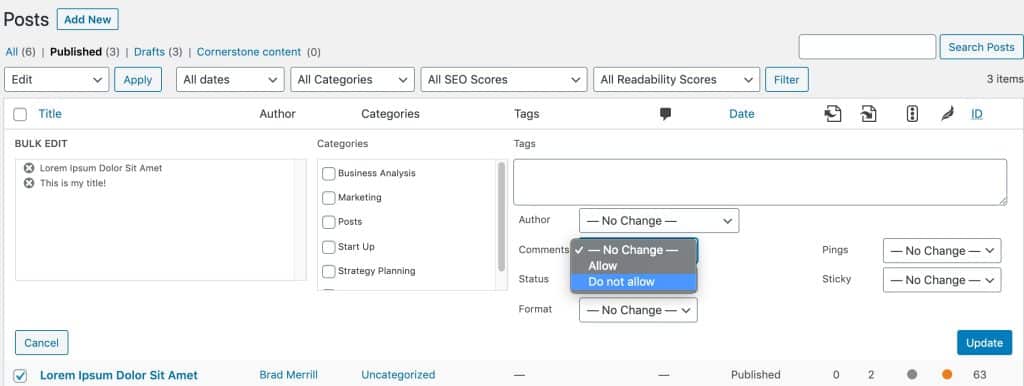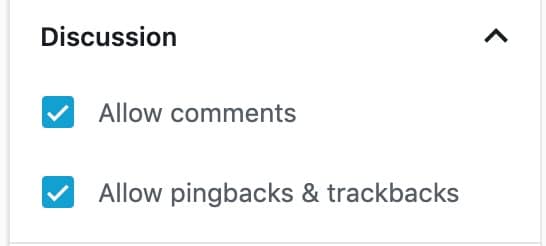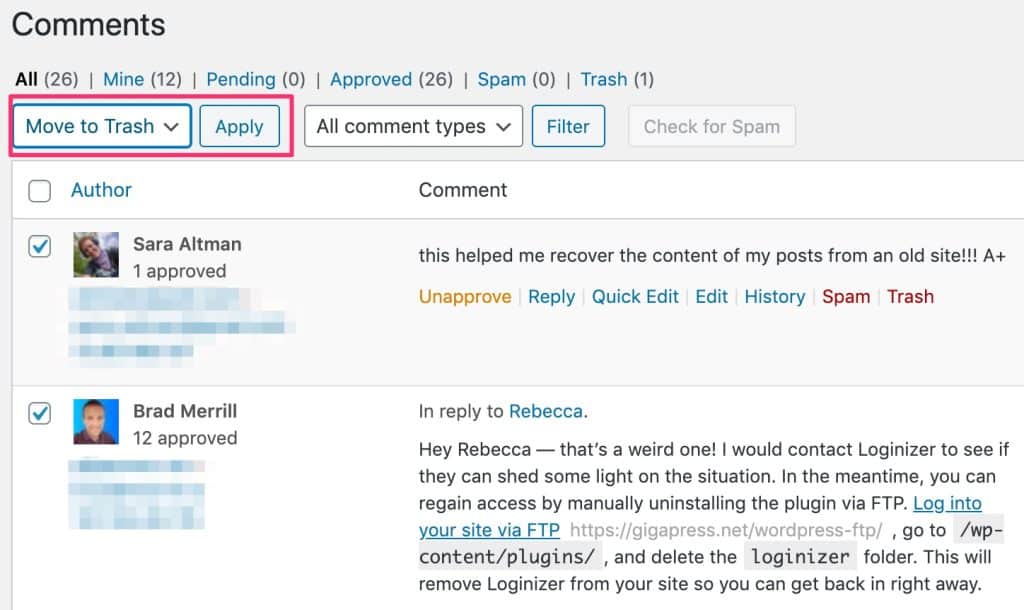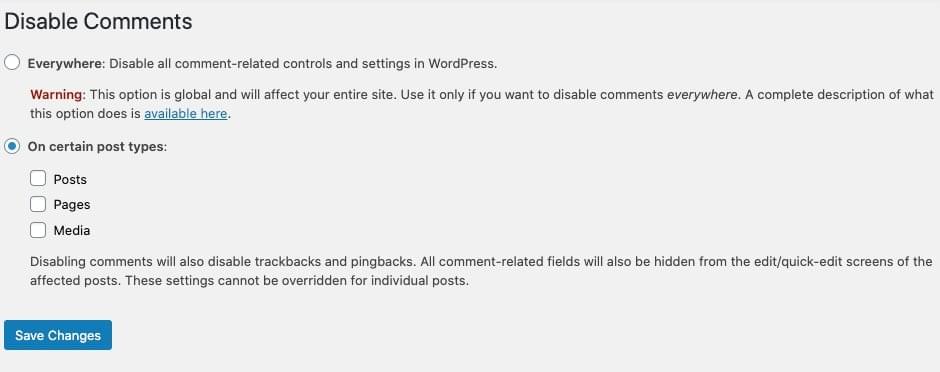Website commentsComments are a feature of WordPress that allow users to engage in discussions about the content of a website. ... More can be beneficial in many different ways. However, in some cases, they can also hurt your message.
When building a WordPress website, you have the option of disabling comments for certain pagesIn WordPress, a page is a content type that is used to create non-dynamic pages on a website. Pages are typica... More (or your entire site) at any time. If you decide that comments cause more harm than good, you can adjust your settings with just a few clicks.
Why Would You Want To Disable Comments In WordPress?
Comments can be a wonderful community-building tool. They can also slightly improve your SEO efforts and spark up interesting discussions.
So why would you want to disable them? Here are a few reasons to consider.
1. You Are Expecting Negativity

While a few negative comments can add value to a successful blog with alternative viewpoints, some postsA post is a type of content in WordPress, a popular open-source content management system used for creating an... More may suffer from them tremendously. If you are writing about a controversial topic and expect a flood of negativity, you may want to consider disabling the commenting option.
The benefits of popular yet controversial posts can be undermined by an influx of negative comments.
2. You Are Focusing On Conversion

If your post is aimed at conversion and you expect the clients to reach out by leaving contact details or taking some other action, you don’t always want them commenting.
The desire to speak with you should be satisfied by filling out a contact form instead of leaving comments.
3. Your Website is Purely Informational

You may be focusing on sharing important information with your audience to establish yourself as a credible industry expert.
In this case, comments may not add any real substance, and even have the potential to detract from your message.
4. You Are Pressed for Time

If you allow comments on your website, you need to find the time to moderate and reply to them.
Without some moderation, spammers and trolls can wreak havoc in your comments. And while replying to comments isn’t strictly required, failing to do so may leave your audience unsatisfied when they have questions.
If you don’t have time and resources to keep up with the audience, you may want to disable comments for the time being.
How to Disable Comments on All Future Posts
If you want to disable comments on all future posts without affecting your previous discussions, take the following steps:
In the main menuIn WordPress, a menu is a collection of links that are displayed as a navigation menu on a website. Menus are ... More of your WordPress dashboardIn WordPress, the Dashboard is a central hub for managing a website's content and settings. It is the first sc... More, go to Settings > Discussion.
From here, simply uncheck the box labeled “Allow people to submit comments on new posts.

While this option disables all comments on future posts by default, you can still adjust the commenting option for each new page individually.
How to Disable Comments on Posts in Bulk
If you want to turn off comments for several posts simultaneously (without disabling them site-wide), you can do so by going to Posts > All Posts in WordPress.
Select the posts for which you’d like to disable comments, then choose “Edit” from the “Bulk Actions” menu, and click Apply.
You’ll see a Bulk Edit screen where you can choose “Do Not Allow” from the comments dropdown box. Then click “Update.”

By default, you can select only 20 posts at a time. You can change this default setting to show more posts simultaneously by opening the “Screen Options” menu in the upper-right corner.
How to Disable Comments on Individual Posts
In some cases, you may want to disable comments for a particular post while keeping the rest of your commenting options intact. This could happen in case one post is highly controversial, and an influx of comments is hurting its message.
To do this, start by editing the post you want to disable comments for.
In the WordPress post editor, locate the “Discussion” section in the right sidebar:

Uncheck the box next to “Allow comments,” update the post, and you’re good to go.
If all the comments on your WordPress website are disabled, you can follow this process to enable comments on individual posts and pages. Simply follow the above steps for the posts you want comments for and check the “Allow comments” box.
How to Delete Existing Comments
Disabling comments in WordPress prevents people from leaving comments in the future, but you may also want to delete comments that already exist.
You can do this by going to Comments in the main WordPress menu. Select all the comments you want to delete, choose “Move to Trash” from the “Bulk Actions” menu, and click Apply.

How to Disable Comments Sitewide
If you want to disable comments across your entire WordPress website, you can do so with the free Disable Comments pluginA plugin is a software component that adds specific features and functionality to your WordPress website. Esse... More.
With this plugin, you can disable comments on any post type (posts, pages, and media) or the entire website. Once you do it, settings for individual posts can’t be overridden. The plugin removes all comment-related links from the admin menu and admin bar.
After activating the plugin, go to Settings > Disable Comments to configure it.

From here, you can easily choose to disable comments everywhere, or only on certain post types.
Final Thoughts

While comments make sense for some websites, there are plenty of cases where they may not be appropriate. That’s why knowing how to disable comments individually or site-wide can help you avoid unpleasant surprises.
If you have any questions about disabling comments on your WordPress website, please feel free to leave them below.



